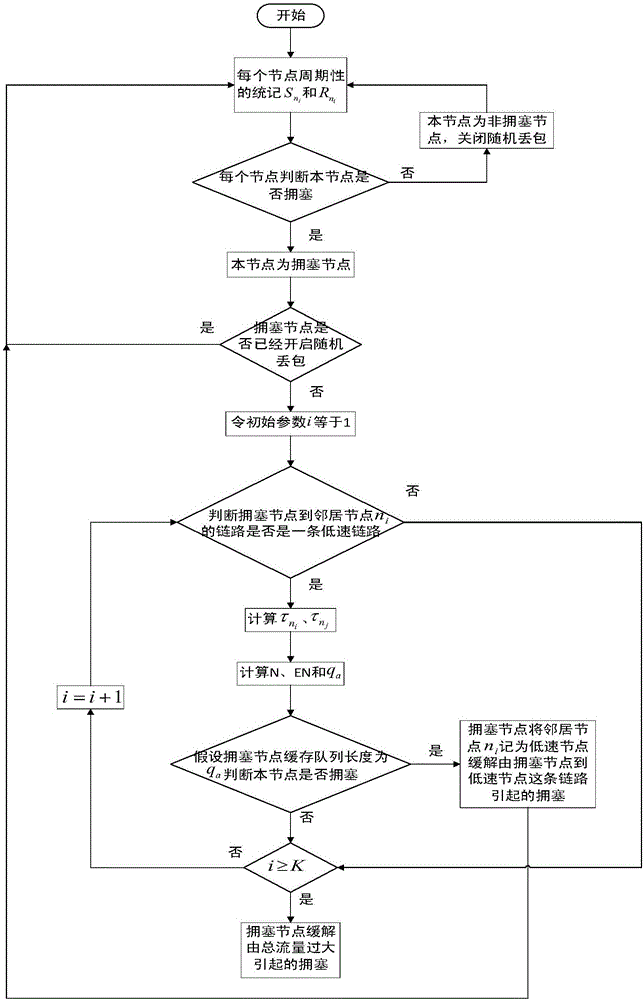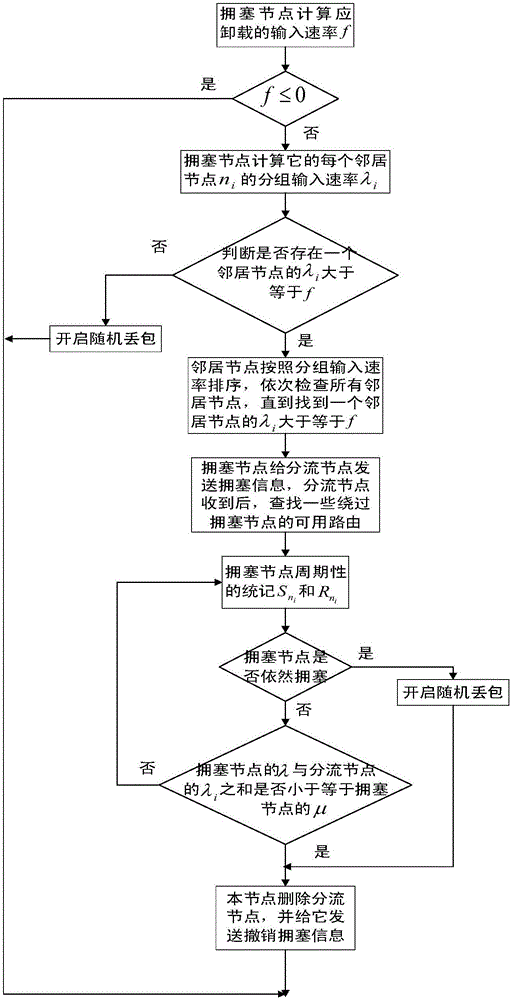Method for realizing congestion control of Ad Hoc network based on multi-path routing protocol
A routing protocol and congestion control technology, applied in the AdHoc network to realize the congestion control field of the ad hoc network, can solve problems such as system instability, network throughput reduction, queue oscillation, etc., to avoid simple packet loss, avoid blindness, and improve efficiency effect
- Summary
- Abstract
- Description
- Claims
- Application Information
AI Technical Summary
Problems solved by technology
Method used
Image
Examples
Embodiment Construction
[0031] The content of the present invention will be described in detail below in conjunction with the accompanying drawings and examples. The present example is implemented on the premise of the technical solution of the present invention, and provides detailed implementation modes and operation procedures, but the protection scope of the present invention is not limited to the following examples. .
[0032] refer to Figure 5 , the network scenario used in the present invention is an Ad Hoc self-organizing network. The network layer of the node adopts the multi-path table-driven protocol, the MAC layer adopts the TDMA protocol, the congested node is the node that is judged to be in the congested state according to the length of the cache queue of the node, the offload node is the node selected by the congested node for traffic scheduling, and the access node is the The third hop node on the main route of the offload node, the offload family node is the node on the link from ...
PUM
 Login to View More
Login to View More Abstract
Description
Claims
Application Information
 Login to View More
Login to View More - R&D
- Intellectual Property
- Life Sciences
- Materials
- Tech Scout
- Unparalleled Data Quality
- Higher Quality Content
- 60% Fewer Hallucinations
Browse by: Latest US Patents, China's latest patents, Technical Efficacy Thesaurus, Application Domain, Technology Topic, Popular Technical Reports.
© 2025 PatSnap. All rights reserved.Legal|Privacy policy|Modern Slavery Act Transparency Statement|Sitemap|About US| Contact US: help@patsnap.com



